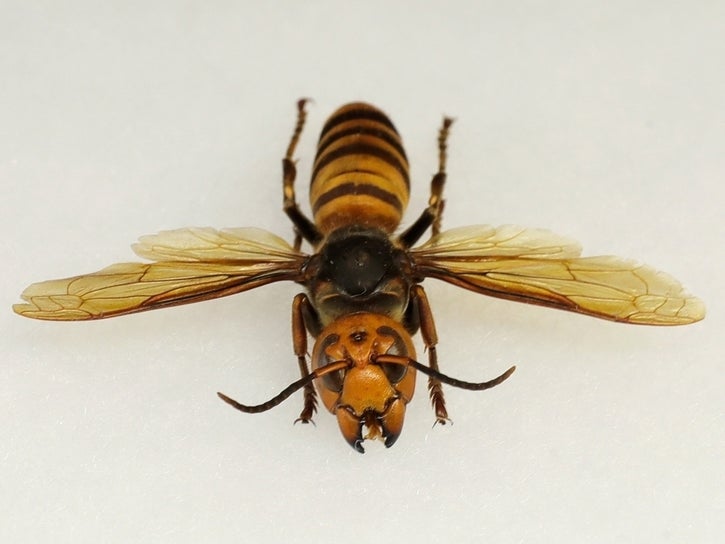Invasive Deadly Hornets from Asia Enter North America
May 13, 2020
The invasive hornet became known as the “murder hornet.” These hornets came to get this nickname because up to 50 people are killed in Japan every year by these hornets, according to the New York Times. The murder hornets have mandibles shaped like spiked shark fins and are capable of killing a whole honeybee hive in as little as an hour. These deadly hornets not only possess a threat to honeybees, they are also a threat to humans. They have a stinger long enough to puncture a beekeeping suit that delivers venom to its target. Jun-ichi Takahashi, a researcher at Kyoto Sangyo University in Japan, states that the murder hornet delivers doses of toxic venom equivalent to that of a venomous snake, and a series of stings can be fatal. Victims claim that the sensation of being stung by these hornets is similar to that of a hot metal driving into the skin.
The murder hornets are very large compared to most other bee species. The queens are able to grow up to two inches long. The appearance of these hornets’ face is described as very distinctive, cartoon-like shape with teardrop eyes similar to that of Spider-Man. The body is riddled with orange and black stripes, extending down the body like tiger stripes. These hornets have wispy, broad wings similar to that of a dragonfly.
Ted McFall, a veteran bee keeper in Washington State, recounted discovering the presence of this species for the first time to the Times. McFall stated that he found a pile of bee carcasses on the ground in front of a hive. Several thousands of the bees from the colony had their heads ripped off. This sparked an urgency to remove the murder hornets from North America before they are able to establish a dense population.
The urgency of needing to find the murder hornets and eradicated them significantly grew when they were discovered across the border in Canada. A single hornet was discovered in White Rock, British Columbia, about 10 miles away from the discoveries in Washington State. Another hornet was discovered on Vancouver Island. Experts believe these hornets were too far from the others to be from the same colony, therefore, there is likely multiple colonies of these murder hornets have invaded North America.
Scientists are working hard to find the hornets to prevent them from establishing in North America. Chris Looney, an entomologist at the Washington State Department of Agriculture, argues that it must be done within the next couple of years or it will become too late to eradicate the invasive hornets. Scientists are worried, if the murder hornets establish a dense presence in the U.S., the bee populations will be decimated.



